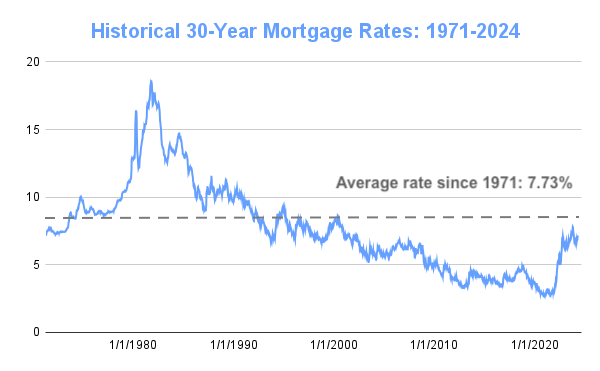Analyzing Mortgage Rate Trends in 2024: A Historical Perspective
Analyzing Mortgage Rate Trends in 2024: A Historical Perspective
The past few years have presented a challenging landscape for homebuyers, with both mortgage rates and home prices rising sharply. However, recent trends suggest a potential easing of this financial squeeze. As reported by The Mortgage Reports, mortgage rates have been on a gradual decline, raising the question of whether this trend will continue or reverse.

Current Landscape and Historical Context
With rates now in the low 6% range, a recent 50-basis-point rate cut by the Federal Reserve has sparked optimism among prospective buyers. Historically, mortgage rates have fluctuated significantly, with Freddie Mac data showing a long-term average of 7.73% for 30-year fixed-rate mortgages since 1971.

Notable Historical Events
- 1981: The all-time high for mortgage rates, with averages peaking at 16.63%.
- 2008: The mortgage slump, with rates at 6.03% amidst the financial crisis.
- 2021: Record-low rates, reaching 2.65% due to pandemic-induced Federal Reserve policies.
The Road Ahead
The Federal Reserve’s recent actions and anticipated future cuts could further influence mortgage rates. Experts predict that rates might fall to between 5.5% and 6.0% by the end of next year, providing potential relief for homebuyers. However, with economic conditions remaining unpredictable, borrowers are advised to focus on their financial readiness rather than attempting to time the market.
For those exploring their mortgage options, understanding the factors affecting rates—such as credit score, down payment, and loan type—is crucial. Personalized rates often diverge from the average, offering opportunities for savvy borrowers to secure favorable terms.
Conclusion
As the housing market navigates these evolving conditions, staying informed about mortgage rate trends and historical context is essential. For more detailed insights, refer to the original article on The Mortgage Reports.











